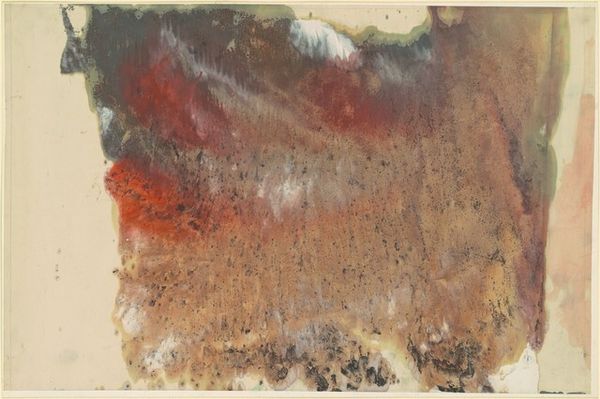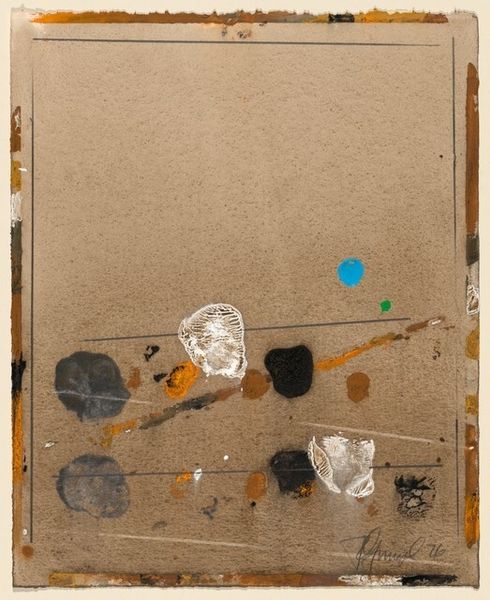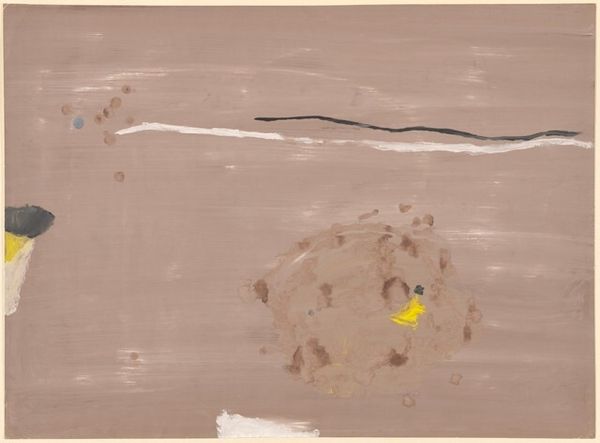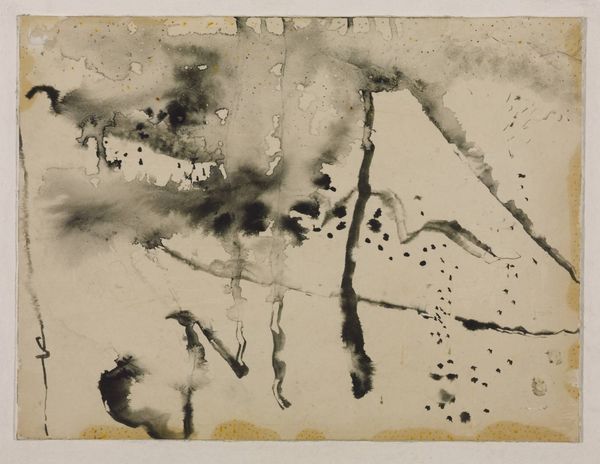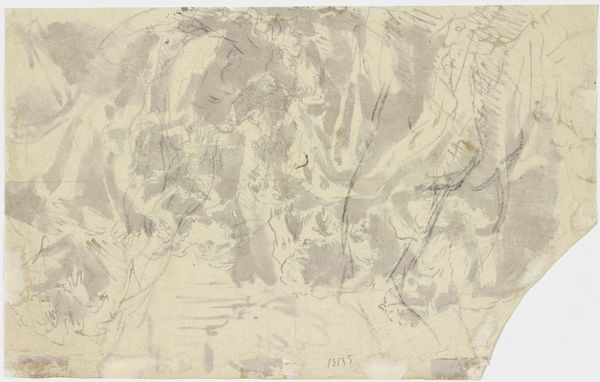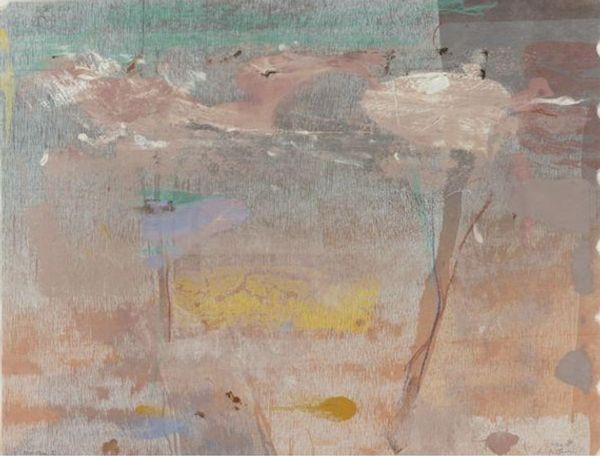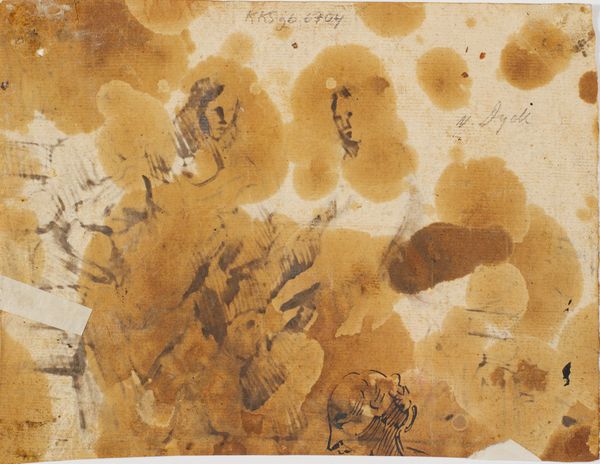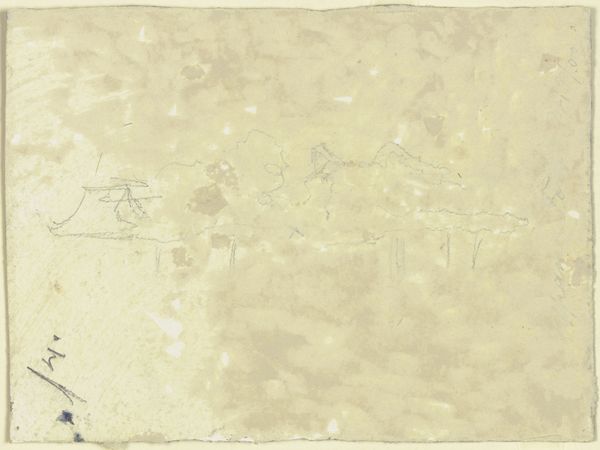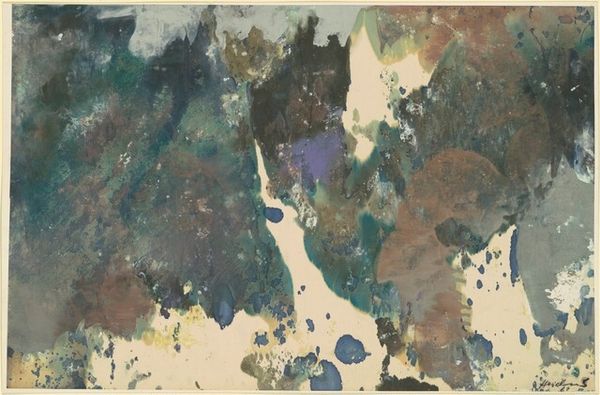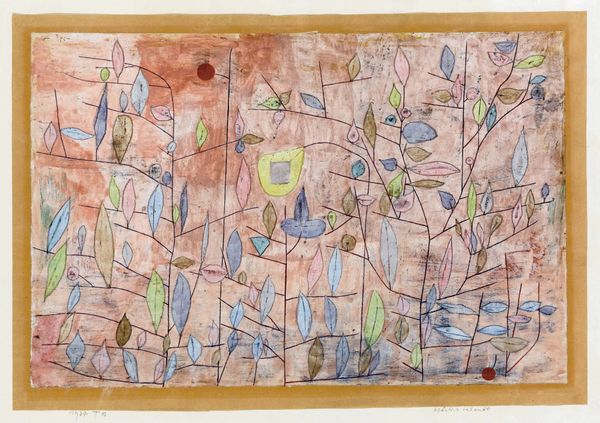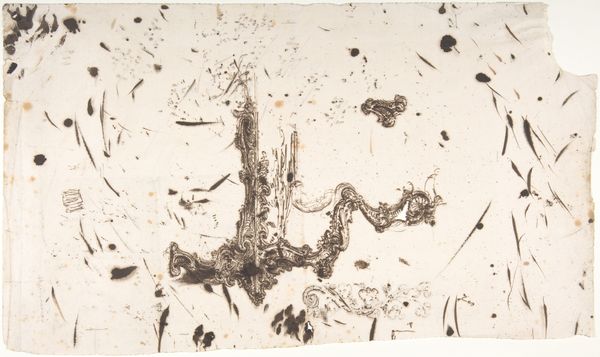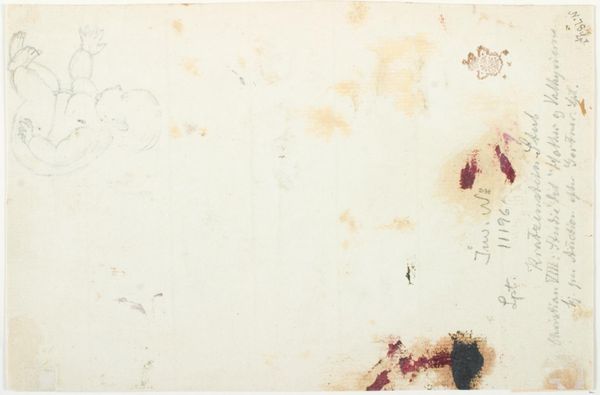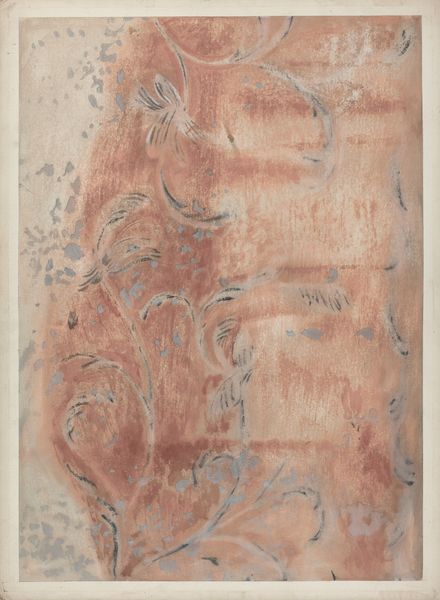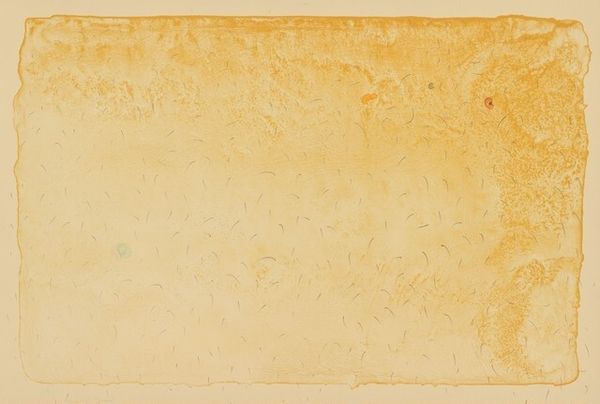
Dimensions: sight size: 58.1 x 79.5 cm (22 7/8 x 31 5/16 in.)
Copyright: National Gallery of Art: CC0 1.0
Curator: Helen Frankenthaler created this “Untitled” watercolor and gouache work in 1983, an interesting period following her explorations of soak-stain and moving towards more layered, textural works. Editor: It has an earthy feel. A monochrome palette broken only by little shocks of color—gold, green, a dab of pink. It feels like a map, perhaps an aerial view of a dried riverbed, or the desert? Curator: It's interesting you mention a map. Abstraction, particularly after the Second World War, often became a battleground. For the expression of free, democratic ideals, which the U.S. then projected onto its art scene as a signifier of cultural capital during the Cold War. Frankenthaler stood out, navigating those socio-political currents. Editor: Even though it's abstract, I can't help but search for meaning in the specific forms. Like alchemical symbols… a dot might represent perfection, the sun or spirit, a reminder that art in this time broke free from convention, while these layered washes suggest a world of unseen connections and forces. Do you feel like the imagery speaks to you symbolically? Curator: Her practice built on but ultimately departed from Abstract Expressionism. I'd also push back against interpreting these elements as concrete, alchemical signs. Frankenthaler embraced a more intuitive process, less interested in coded symbolism than the pure expression of color and form, challenging and pushing at the boundaries of traditional media. How the works will live outside the studio becomes as crucial as what went on in it. Editor: Maybe that resistance to fixed meaning *is* the meaning! The monochrome field as an invitation to reflect on earth, transformation and connection and so open to interpretation by the audience, then, and now! I do love the textural play. It reminds me how even with abstract form, artists still have an impact beyond any explicit representation of what they are putting on canvas. Curator: I think it reveals how post-war modernism changed over a couple of generations, from the bravura expressionism of the 1950s into something altogether quieter and more concerned with formal arrangement by the 80s, which would, in turn, allow space for others. Editor: Yes, there’s something serene about this piece…a contemplative feeling, despite its complete lack of literal subject matter. An excellent thing to meditate upon in light of history.
Comments
No comments
Be the first to comment and join the conversation on the ultimate creative platform.
